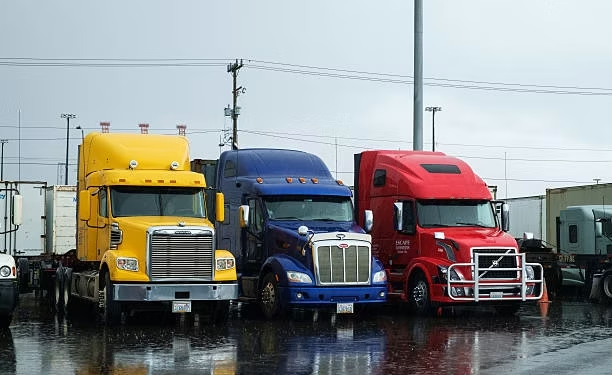By Eva Richardson | Published on April 4, 2025
The North American trucking market continues to show signs of caution as Class 8 truck orders fell sharply in March 2025, according to preliminary data from industry analysts. With fleets scaling back investment amid persistent economic and policy headwinds, the numbers reflect a broader sentiment of strategic restraint across the logistics and freight transportation sector.
Analysts estimate that Class 8 net orders in March totaled between 15,700 and 16,000 units, representing a month-over-month decline of 14% and a year-over-year decrease of up to 22%. Despite modest seasonal adjustments showing a slight uptick, the broader trajectory suggests that fleets remain hesitant to expand or replace equipment amid rising costs and geopolitical uncertainty.
A Pause in Fleet Expansion
“The first quarter of 2025 is shaping up to be one of fleet hesitation, not acceleration,” noted Eric Starks, Chairman of FTR Transportation Intelligence. “Many private and for-hire carriers are watching the economic landscape closely and holding off on big capital expenditures.”
While demand for freight capacity remains stable, operators are grappling with a range of challenges:
-
Inflationary pressures on fuel, labor, and parts
-
Lingering effects of high interest rates on financing
-
Volatile policy developments, including tariffs and trade restrictions
Add to that the uncertainty surrounding emissions regulations and powertrain transitions, and it becomes clear why many fleets are choosing to wait and see rather than commit to new Class 8 purchases.
Seasonally Adjusted Optimism?
On a seasonally adjusted basis, the March order figures showed a modest 1.1% increase, reaching approximately 16,500 units. However, this number still corresponds to one of the lowest seasonally adjusted annual rates (SAAR) in three years—offering little relief for OEMs hoping for a spring rebound.
“The data suggests demand isn’t collapsing, but it’s certainly not rebounding either,” said ACT Research Vice President Steve Tam. “We’re seeing a flattening effect as buyers remain on the sidelines.”
Medium-Duty Market Also Faces Headwinds
The downturn wasn’t limited to heavy-duty trucks. Preliminary orders for Classes 5–7 trucks (medium-duty segment) came in at 18,600 units, down a staggering 33% year-over-year. Even after seasonal adjustment, these orders reached only 16,800 units, translating to a SAAR of roughly 201,000 units.
Industry insiders point to the same issues driving Class 8 hesitation: cost sensitivity, demand normalization, and uncertainty around commercial fleet electrification timelines.
Implications for the Broader Logistics Ecosystem
This continued slowdown in truck orders is likely to ripple across adjacent sectors, including trailer manufacturers, parts suppliers, and leasing firms. With truck production pipelines already experiencing backlogs and margin pressure, a dip in forward-looking demand could trigger a cooling effect throughout the supply chain.
However, analysts caution against drawing conclusions too quickly. As capacity tightens and aging equipment eventually requires replacement, a surge in deferred demand is likely later in the year—provided macroeconomic conditions stabilize.
What’s Next?
With the busy summer shipping season approaching, all eyes will be on freight volumes, consumer spending, and fleet utilization rates. A turnaround in orders may hinge not just on economic fundamentals, but also fleet confidence in long-term policy direction and infrastructure investment.
For now, March 2025 serves as a reminder that while the freight industry remains foundational to the economy, investment cycles are increasingly influenced by macro volatility and shifting regulatory landscapes.























